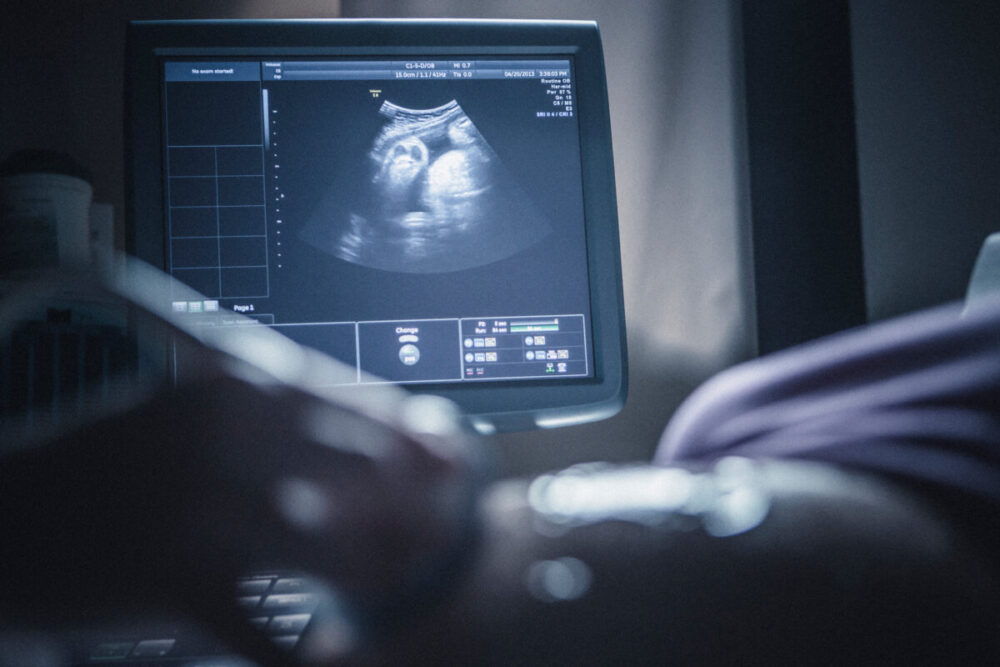
Pregnancy is a period that requires careful treatment under the supervision of specialists. In this regard, ultrasound scans ensure the mother and the baby are in optimal condition. While they allow doctors to get a closer look at the developing baby and monitor its health, ultrasounds also have a preventative purpose. But what exactly is an ultrasound scanner, and how does it work? Read on to learn how many ultrasounds are safe for pregnancy and more:
What is ultrasound?

Ultrasound technology is widely used in various aspects, including monitoring pregnancy. Typically, an ultrasound scanner is a medical device that uses high-frequency sound waves to create images of the inside of the body. It emits sound waves that bounce off the tissues and organs inside the body and return to the scanner, which then uses these echoes to create an image.
In other words, the so-called sonogram creates a visual image of the baby, placenta, and uterus during pregnancy. Usually, the sonographer uses a handheld instrument called a transducer that sends sound waves through the uterus. That way, the device provides a clear picture of the baby’s health, including its shape, size, position, and movements.
How does an ultrasound scan work?
As already mentioned, pregnancy is the period during which an ultrasound scan is vital. Since it visualizes the baby inside the uterus, it is a preferred method for monitoring the baby’s health. Regardless of the purpose, every ultrasound uses identical mechanics.
During an ultrasound scan, the technician uses a transducer on the skin in a particular body area. The transducer sends high-frequency sound waves passing through the skin and into the body. As the sound waves bounce off the internal structures, they are reflected back to the transducer, which converts the waves into an electrical signal. This signal is then processed by a computer, presenting a real-time image of the inside of the body.
How many ultrasound scans are done during pregnancy?

Typically, there’s no clear rule on how many ultrasound procedures a pregnant woman should undergo. However, most cases require one or two courses, or at least one done mid-pregnancy at 18 to 22 weeks.
If you plan or your health provider prescribes, you may have several ultrasound checks for the first two trimesters. Experts often require additional ultrasounds if there are signs of a problem with the baby or other concerns. Here’s what you need to know about each period:
First-trimester ultrasound
The first ultrasound scan is done in the first trimester, around 8-14 weeks into the pregnancy. Usually, its purpose is to confirm the pregnancy and due date and check the baby’s heartbeat and overall development. In some cases, the first ultrasound can alarm for potential problems such as ectopic pregnancy or miscarriage.
Second-trimester ultrasound
During the second trimester, the expectant mother visits a specialist for a second ultrasound check. Such a procedure is usually done around 18-20 weeks into pregnancy and helps the health provider keep track of the baby’s growth. Typically, the ultrasound gives precise information about the baby’s size, heartbeat, position, and movement. Doctors can also check the baby’s development, including its organs and bones. Finally, you can determine your baby’s sex with high accuracy.
Additional ultrasounds
The doctor may recommend additional ultrasounds depending on the pregnancy and the baby’s health. For example, there might be concerns about the baby’s growth, or the expectant mother’s medical condition requires closer monitoring. Moreover, a third-trimester ultrasound may give the doctor a hint of whether you may need a c-section or determine the cause of vaginal bleeding if there is any.
Are ultrasounds safe?
Contrary to popular belief, ultrasounds are entirely safe for babies and mothers-to-be. But while there are no known adverse effects to date, experts caution against unnecessary ultrasounds. The main reason behind this is that such procedures emit energy that might affect a developing baby. Undoubtedly, expectant mothers should be most careful during the first trimester, when the fetus is the most vulnerable to external factors.
In the past few years, many centers started offering 3D and 4D ultrasound packages. While getting photos and videos of your baby with the best quality can be tempting, experts don’t recommend it. There’s no guarantee the staff performing the ultrasounds has proper training. Consequently, the operator may not be qualified to help you.

Final Thoughts
Ultrasound scans are an essential tool for monitoring the health of a developing baby and ensuring a smooth and healthy pregnancy. While they are generally safe, it is crucial to follow your healthcare provider’s recommendations. In other words, you should only have the necessary number of ultrasounds to minimize potential risks. Ultimately, ultrasounds are mandatory for a successful pregnancy without complications.








